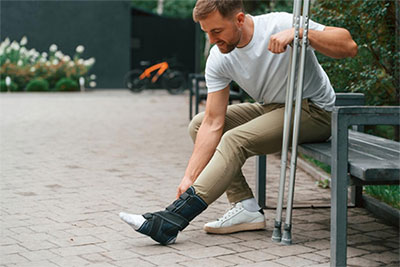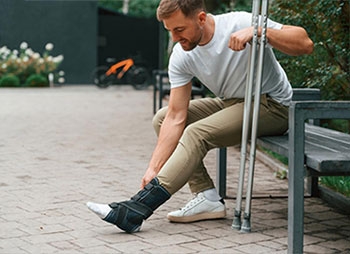
Regaining your ability to walk after foot surgery can feel like a challenge, especially when you’re eager to return to your normal routine. A well-structured rehabilitation plan can help you heal properly, minimize discomfort, and restore mobility. Here’s what you should expect after foot surgery and how to make the most of your recovery journey.
When Can You Start Walking After Foot Surgery?
The timeline for walking after foot surgery depends on the type of procedure and your overall health. Some minimally invasive procedures may allow limited weight-bearing within days, while more complex surgeries—such as fracture repair or joint fusion—may require several weeks of non-weight-bearing recovery. You will be provided a customized recovery plan based on your specific condition and the surgical technique used.
The Phases of Walking Recovery
- The Non-Weight-Bearing Phase
- The Partial Weight-Bearing Phase
- The Full Weight-Bearing Phase
Immediately after surgery, most patients must avoid putting any weight on the affected foot. Crutches or other walking aids may be necessary to keep pressure off the healing area. This phase typically lasts 2–6 weeks, depending on the procedure.
As healing progresses, you may be allowed partial weight-bearing using a walking boot, brace, or supportive shoe. This phase helps the foot gradually adjust to movement without overloading the surgical site. Physical therapy may begin to improve strength and flexibility.
When it is determined to be safe according to your postsurgical instructions, you can transition to full weight-bearing, often starting with short, controlled walks. Physical therapy plays a crucial role in restoring balance, coordination, and proper walking mechanics.
Tips for a Faster and Safer Recovery
Follow Post-Surgical Instructions: Strictly adhere to your surgeon’s guidelines regarding weight-bearing, wound care, and activity modifications to prevent complications.
Use Supportive Devices as Needed: Crutches, knee scooters, or walking boots help protect the foot during early recovery. Transition gradually to normal footwear under medical supervision.
Prioritize Physical Therapy: Targeted exercises restore strength, flexibility, and stability, helping you walk confidently and reduce the risk of re-injury.
Manage Swelling and Pain: Elevate your foot, apply ice as directed, and follow a pain management plan to stay comfortable during recovery.
Choose the Right Footwear: Supportive, cushioned shoes are essential when transitioning back to normal walking. Your surgeon may recommend custom orthotics for additional support.
When to seek Professional Help
While discomfort is expected, contact our office if you experience:
- Severe pain or swelling that worsens
- Signs of infection, such as redness, warmth, or drainage
- Difficulty moving your toes
- New or worsening instability when walking
Get Back on Your Feet with Expert Care
Walking after foot surgery is a gradual process, but with expert guidance and a structured rehabilitation protocol, you can regain mobility safely and effectively. If you’re considering foot or ankle surgery, schedule a consultation with Dr. Ho to explore your treatment options and recovery timeline.
AUTHOR: Dr. Bryant S. Ho is board-certified in orthopedic surgery and is trained in the operative and non-operative management of adolescent and adult foot and ankle disorders. Dr. Ho places a strong emphasis on customizing his care for each patient to ensure successful outcomes. He provides all treatment options, including preventative care, conservative management, and operative intervention.



